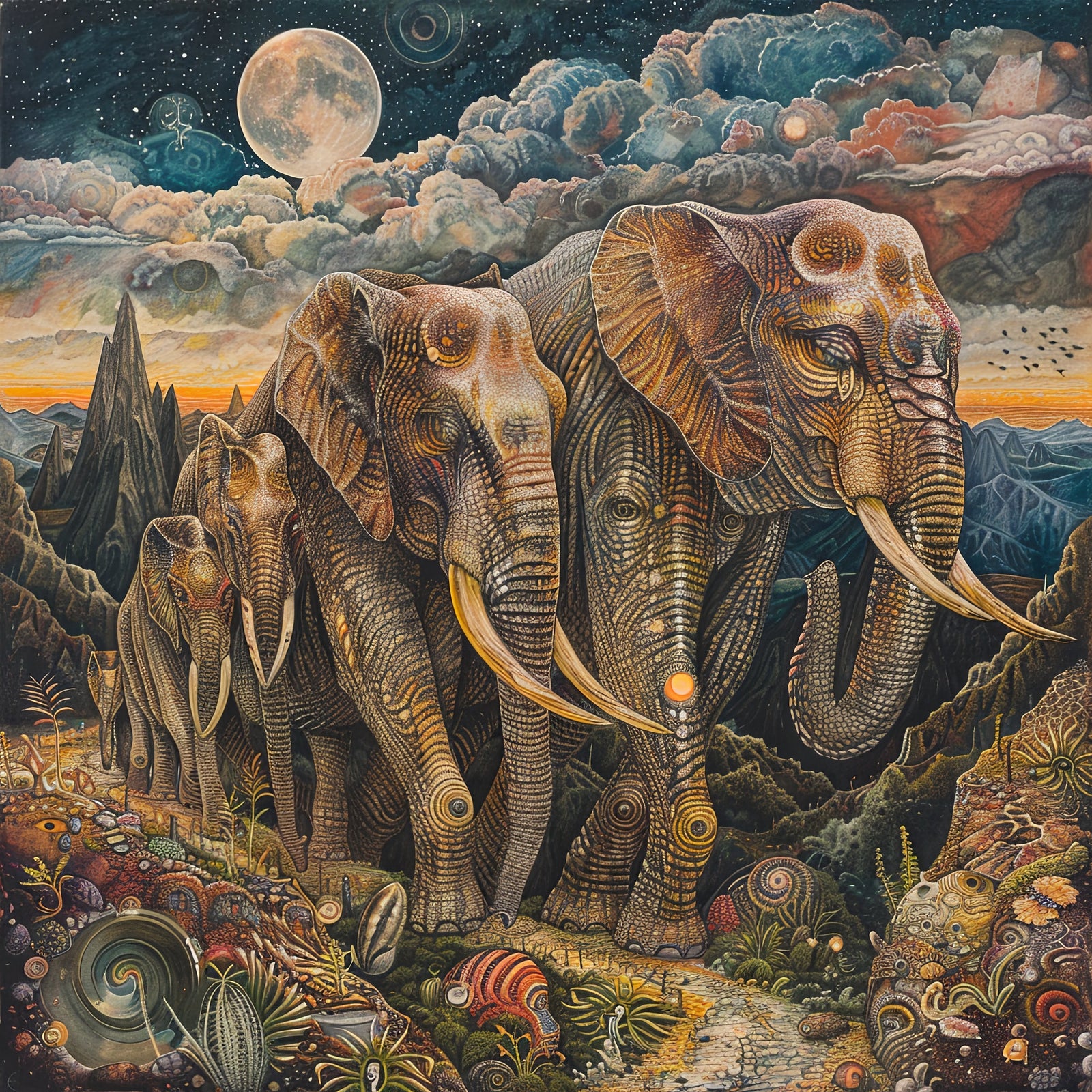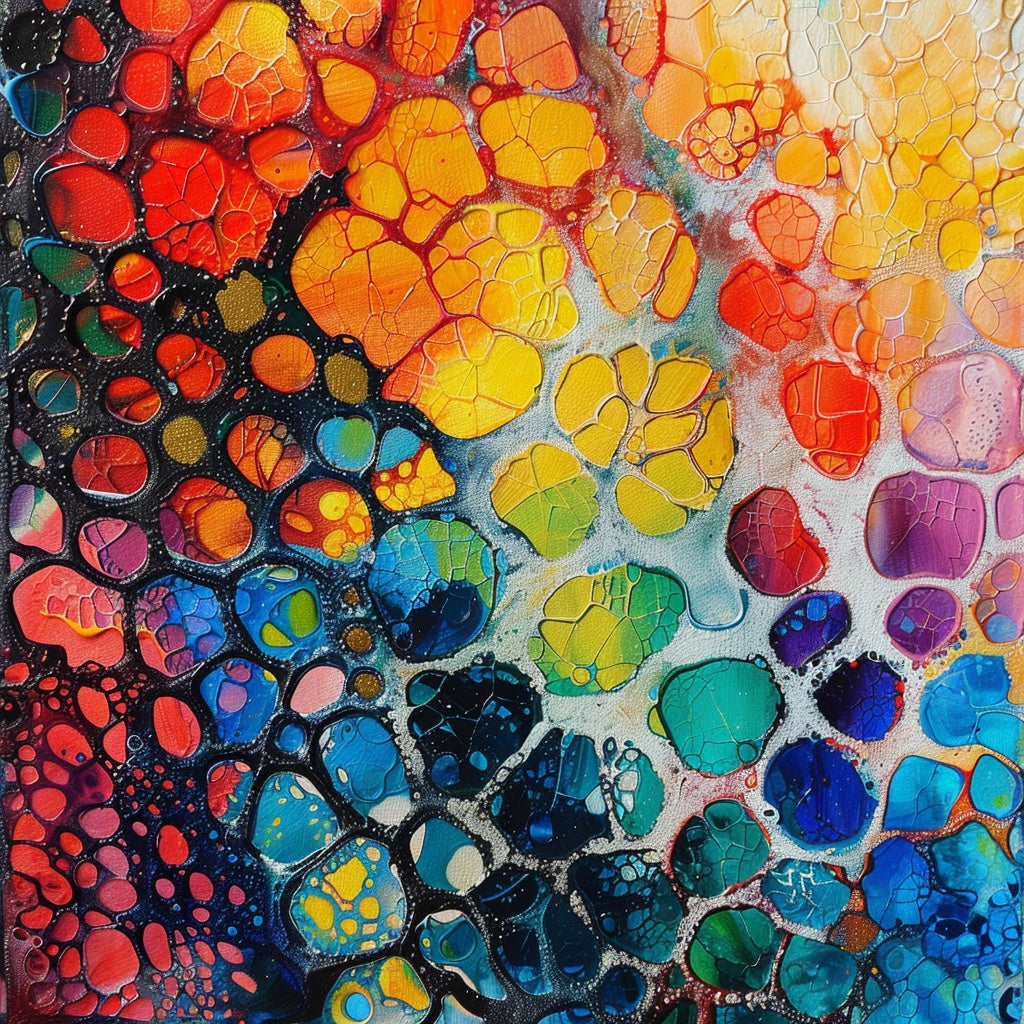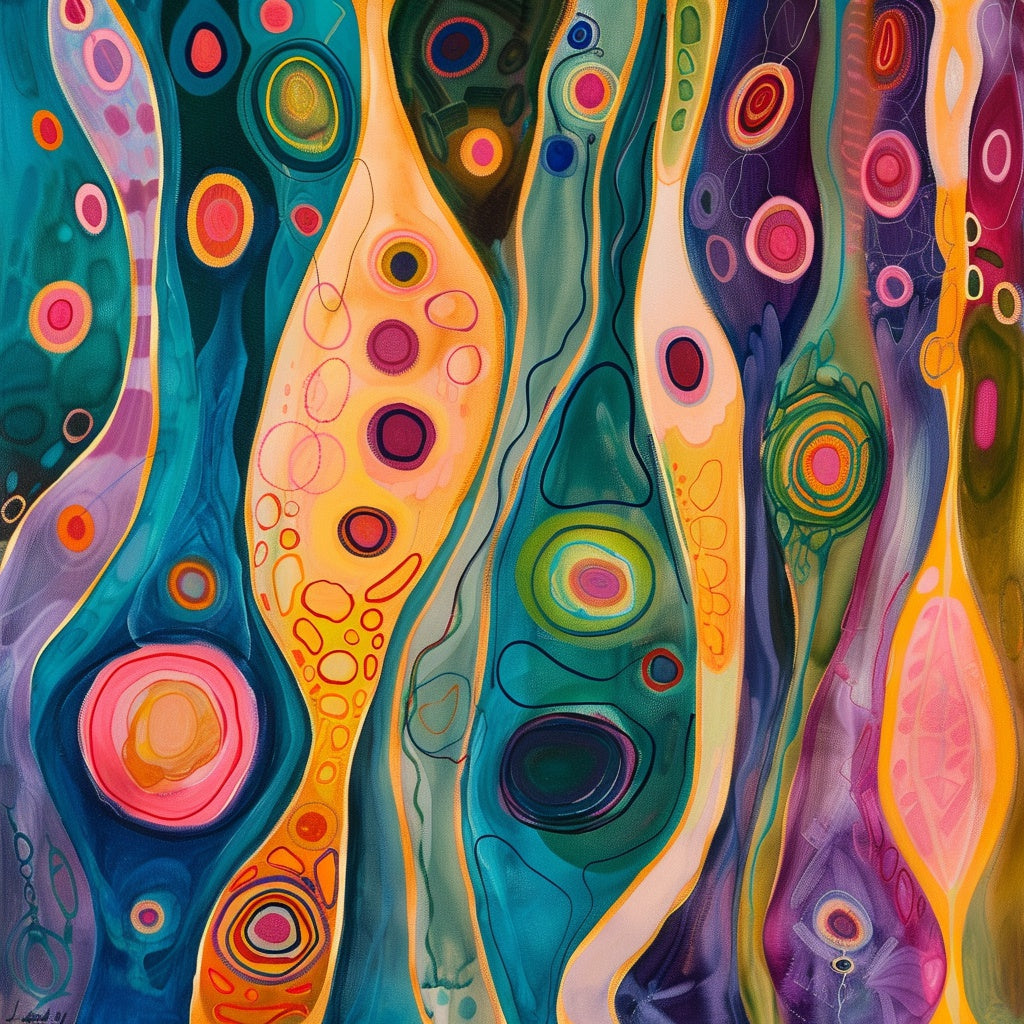AI's Interpretation of Art: Color, Form, and Beyond
AI and Computer Vision in Art Analysis
Artificial intelligence (AI) is rapidly changing how we interact with art, from generating new pieces to analyzing existing ones. One of the most fascinating aspects of this technology is its ability to interpret color and form in art. This task was previously thought to be exclusive to human perception and understanding. AI's ability to analyze art is rooted in computer vision, a field of artificial intelligence that enables computers to "see" and understand images. By applying computer vision techniques, AI algorithms can analyze visual artworks at scale, uncovering patterns and insights that might be missed by the human eye. This technology is transforming how we approach art analysis, providing new tools for art historians, curators, and researchers to study art in a more comprehensive and data-driven way. At the core of this technology lies machine learning, where algorithms are trained on large datasets of artworks to learn patterns and relationships, enabling them to make predictions or generate interpretations about new, unseen artworks. This learning process involves several key techniques, including image processing and feature extraction. For example, image processing consists of manipulating images to enhance relevant features, such as adjusting brightness, contrast, and color balance. Feature extraction involves identifying and quantifying specific visual attributes of an artwork, such as colors, textures, shapes, and compositions. These techniques allow AI systems to automatically detect and recognize visual elements within an artwork, such as brushstrokes, color palettes, and shapes. For example, AI can be used to detect faces in portraits, identify objects in still-life paintings, and recognize architectural elements in landscapes. A remarkable example of this technology is its application in the restoration of the Sistine Chapel frescoes. By analyzing high-resolution images of Michelangelo's masterpiece, computer vision identified areas that had faded or developed surface irregularities over centuries, guiding conservators in their restoration efforts.
How AI Interprets Color
AI algorithms interpret color by analyzing digital images and identifying the different hues, saturations, and values present in the artwork. This process involves several steps. First, AI systems often convert images from the standard RGB (Red, Green, Blue) color space to other color spaces, such as HSV (Hue, Saturation, Value) or Lab (CIELAB). These alternative color spaces provide a more intuitive and perceptually uniform representation of color, making it easier for AI algorithms to analyze and interpret color relationships. Second, AI algorithms extract various color features from the image, such as color histograms, dominant colors, and color palettes. These features capture the distribution and relationships of colors within the artwork, providing a quantitative representation of the color composition. Finally, AI algorithms use machine learning techniques to interpret the extracted color features and understand how they contribute to the overall aesthetic and meaning of the artwork. This involves training models on large datasets of artworks with different color schemes and styles, allowing the AI to learn patterns and associations between colors and artistic expressions. For example, AI can learn to identify and apply analogous color schemes, where colors adjacent to each other on the color wheel are used to create a harmonious and balanced effect. AI can also learn to adjust saturation and brightness to enhance the visual impact of an artwork, mimicking the techniques used by human artists.
How AI Interprets Form
AI algorithms interpret form by analyzing the shapes, lines, and contours present in the artwork. This process involves several steps. First, AI systems use computer vision techniques to detect and recognize different shapes within the artwork, such as circles, squares, triangles, and more complex organic forms. This involves analyzing the edges, corners, and contours of the objects depicted in the artwork. It's interesting to note that while AI requires extensive training on labeled datasets to achieve this, human toddlers can intuitively recognize and utilize simple geometric shapes without any prior learning. This difference highlights the distinct ways in which humans and AI learn to perceive and understand visual information. Second, AI algorithms extract various form features from the image, such as object size, aspect ratio, and spatial relationships between objects. These features capture the overall composition and arrangement of forms within the artwork, providing a quantitative representation of the visual structure. Finally, AI algorithms use machine learning techniques to interpret the extracted form features and understand how they contribute to the overall aesthetic and meaning of the artwork. This involves training models on large datasets of artworks with different compositions and styles, allowing the AI to learn patterns and associations between forms and artistic expressions. For example, AI can learn to recognize and interpret the use of perspective, symmetry, and balance in an artwork, understanding how these elements create a sense of depth, harmony, and visual impact. AI can also learn to identify and interpret the use of different artistic techniques, such as shading, texture, and line work, understanding how these techniques contribute to the overall style and expression of the artwork.
Limitations of AI in Art Interpretation
While AI has made significant strides in interpreting color and form in art, there are still limitations to its capabilities. One key limitation is the lack of emotional and cultural context. AI systems often struggle to understand the emotional and cultural context of an artwork, which can be crucial for accurate interpretation. Human artists and viewers bring their own personal experiences, cultural backgrounds, and emotional responses to art, which AI systems may not fully grasp. AI systems may also have a limited understanding of artistic intent and may not always accurately interpret the artist's intent or the underlying message behind an artwork. Art is often open to interpretation, and AI systems may not capture the full range of meanings and nuances that a human viewer might perceive. AI systems can also struggle to interpret abstract or conceptual art, which often relies on symbolism, metaphor, and subjective interpretation. These forms of art may not have clear visual patterns or features that AI algorithms can quickly analyze. In addition, AI art currently struggles to produce the same image from different perspectives or angles, a capability that human artists readily possess. The following table highlights some key differences between human and AI art interpretation:
- Emotional Depth: Human interpretation is driven by personal experiences, cultural background, and emotional responses. At the same time, AI often struggles to grasp the emotional context and nuances of human feelings.
- Originality: Humans can create entirely original works based on personal experiences and cultural influences, whereas AI relies on pre-existing data and patterns, potentially lacking a true understanding of originality.
- Detail and Complexity: Humans can imbue work with intricate details and complex elements that AI may struggle to replicate authentically, whereas AI may exhibit a higher level of symmetry and fewer imperfections compared to human art.
- Consistency: Human art may have inconsistencies or variations in style and technique, whereas AI often produces more uniform and consistent results.
- Surrealism: Human art may include surreal elements, but they are often grounded in personal or cultural contexts. AI may include surreal or fantastical elements that seem less intentional or meaningful.
AI in Art Restoration
AI is not only changing how we analyze art but also how we preserve it. AI is reshaping the restoration and conservation of artworks by employing new technologies such as computer vision and machine learning. These tools can enhance the precision and effectiveness of preserving cultural artifacts. One way AI contributes to art restoration is by recreating lost elements of damaged artworks. For instance, in Rembrandt's "The Night Watch," AI was used to reconstruct missing sections that had been cut down in the 18th century. By analyzing a surviving small-scale copy and digital images of the remaining painting, an AI system learned to imitate Rembrandt's style and painted the lost sections at full scale. AI can also be used to analyze the condition of artworks and predict potential deterioration. Machine learning models are trained on datasets containing images of artworks in various states of preservation. By learning from these examples, the model can identify patterns that suggest early signs of deterioration, such as areas at higher risk of cracking or colors that are likely to fade. This predictive capability allows conservators to take preventive measures and ensure the long-term preservation of artworks.
AI in Art Authentication
AI is also playing a growing role in art authentication, helping to distinguish authentic works from forgeries. AI-powered tools can analyze an artwork's visual characteristics, such as brushstrokes, color palettes, and stylistic consistencies, at a microscopic level, comparing them to known authentic works. This technology has been instrumental in uncovering forgeries and ensuring the integrity of art collections. One notable example is the use of AI to authenticate a watercolor by Marianne von Werefkin at Germann Auctions in Zurich. The auction house used AI authentication to certify the artwork for sale, marking a significant step in the real-world application of AI in the art market.
AI and the Art Market
Beyond restoration and authentication, AI is also impacting the art market in various ways. AI algorithms can analyze vast databases of artworks to identify patterns and correlations that may not be apparent to human observers. This capability allows AI systems to:
- Identify Emerging Artists: By analyzing social media data, gallery sales, and online marketplaces, AI can uncover promising emerging artists who may be overlooked by traditional methods.
- Forecast Art Trends: AI systems can identify emerging styles, motifs, and color schemes, assisting artists in anticipating future market demands and collectors in making informed investment decisions.
- Estimate Market Value: AI algorithms can analyze factors such as artist reputation, provenance, and sales history to provide accurate estimates of artwork values, aiding in art appraisal and investment strategies.
These applications demonstrate the potential of AI to bring greater transparency and efficiency to the art market, benefiting artists, collectors, and art institutions alike.
In conclusion, AI is revolutionizing how we interact with and understand art. Its ability to interpret color and form through techniques like computer vision and machine learning is opening up new possibilities for art analysis, restoration, authentication, and market analysis. While AI has limitations in grasping emotional and cultural contexts and fully understanding artistic intent, it offers valuable tools for enhancing our appreciation and preservation of art. As AI technology continues to evolve, we can expect even more sophisticated and nuanced interpretations of art, leading to a deeper understanding of artistic expression and the human creative process. This ongoing development promises to reshape the art world in profound ways, fostering new forms of artistic creation, enhancing our ability to preserve cultural heritage, and transforming how we experience and interpret art.
Seeing Art Through Computer Vision: The Future of Creation, Interaction, and Preservation, accessed February 11, 2025, https://www.hidonix.com/blog/seeing-art-through-ai-the-future-of-creation-interaction-and-preservation
www.adobe.com, accessed February 11, 2025, https://www.adobe.com/products/firefly/discover/what-is-ai-art.html#:~:text=Generative%20AI%20gives%20you%20access,artmaking%20using%20Text%20to%20Image.
The Impact of Artificial Intelligence on Art - A Systematic Literature Review - ResearchGate, accessed February 11, 2025, https://www.researchgate.net/publication/378248627_The_Impact_of_Artificial_Intelligence_on_Art_-_A_Systematic_Literature_Review
AI and Art Unit 3 – Computer Vision in Art Analysis - Fiveable, accessed February 11, 2025, https://library.fiveable.me/art-and-artificial-intelligence/unit-3
10.1 AI for art analysis and interpretation - Fiveable, accessed February 11, 2025, https://library.fiveable.me/art-and-artificial-intelligence/unit-10/ai-art-analysis-interpretation/study-guide/1rYK0FMsCt9tAB9E
The Mathematics Behind Color Detection in Machine Learning Algorithms | by Rajat Sharma, accessed February 11, 2025, https://medium.com/@rajat01221/the-mathematics-behind-color-detection-in-machine-learning-algorithms-fc79a8eddf98
Color Theory in AI Art - Deep Dream Generator, accessed February 11, 2025, https://deepdreamgenerator.com/blog/color-theory-in-ai-art
Understanding pattern recognition in AI - Innovation, accessed February 11, 2025, https://en.innovatiana.com/post/pattern-recognition-in-ai
Amazing AI Tables. Recognition of Geometric Shapes | by Boris Kravtsov, PhD | Medium, accessed February 11, 2025, https://kravtsov-development.medium.com/amazing-ai-tables-44af52c993a2
Unlocking Object Recognition: How Toddlers and AI See the World Differently - exci, accessed February 11, 2025, https://www.exci.ai/unlocking-object-recognition-how-toddlers-and-ai-see-the-world-differently/
What is Pattern Recognition? A Gentle Introduction (2025) - viso.ai, accessed February 11, 2025, https://viso.ai/deep-learning/pattern-recognition/
www.kreo.net, accessed February 11, 2025, https://www.kreo.net/news-2d-takeoff/how-ai-helps-to-read-blueprints#:~:text=AI%20utilizes%20pattern%20recognition%20algorithms,electrical%20outlets%2C%20and%20plumbing%20fixtures.
How Artificial Intelligence Shapes How We Think, Act, and Connect, accessed February 11, 2025, https://www.fielding.edu/how-artificial-intelligence-shapes-how-we-think-act-and-connect/
Machine learning Pattern Recognition: Explanation and Examples - PixelPlex, accessed February 11, 2025, https://pixelplex.io/blog/machine-learning-pattern-recognition/
www.interaction-design.org, accessed February 11, 2025, https://www.interaction-design.org/literature/topics/ai-generated-art#:~:text=4.,profound%20emotional%20or%20cultural%20significance.
Is AI-generated art actually art? - University of Plymouth, accessed February 11, 2025, https://www.plymouth.ac.uk/discover/is-ai-generated-art-actually-art
Lack Of Emotion In Ai Art | Restackio, accessed February 11, 2025, https://www.restack.io/p/emotion-ai-answer-lack-of-emotion-in-ai-art-cat-ai
Artificial Intelligence & Art: What is AI Art & How Will It Impact Artists? - CG Spectrum, accessed February 11, 2025, https://www.cgspectrum.com/blog/what-is-ai-art-how-will-it-impact-artists
www.ultralytics.com, accessed February 11, 2025, https://www.ultralytics.com/blog/ai-in-art-and-cultural-heritage-conservation#:~:text=AI%20is%20reshaping%20the%20restoration,effectiveness%20of%20preserving%20cultural%20artifacts.
Artificial Intelligence in Art Restoration: Breathing New Life into Classic Masterpieces, accessed February 11, 2025, https://thefusioneer.com/blog/artificial-intelligence-in-art-restoration-breathing-new-life-into-classic-masterpieces/
AI in Art and Cultural Heritage Conservation - Ultralytics, accessed February 11, 2025, https://www.ultralytics.com/blog/ai-in-art-and-cultural-heritage-conservation
Artificial Intelligence and Art Authentication | News - Hephaestus Analytical, accessed February 11, 2025, https://www.hephaestusanalytical.com/blog/artificial-intelligence-and-the-detection-of-forgery-in-art-authentication
First A.I.-Authenticated Artwork Sells Big at Auction in 'Pivotal Test Case' - Artnet News, accessed February 11, 2025, https://news.artnet.com/market/first-a-i-authenticated-artwork-sells-big-at-auction-in-pivotal-test-case-2580910
AI in Analyzing Art Trends: A Transformative Tool for the Art World - Artificial Paintings, accessed February 11, 2025, https://artificialpaintings.com/blog/2024/06/19/ai-in-analyzing-art-trends-a-transformative-tool-for-the-art-world/



Leave a comment (all fields required)